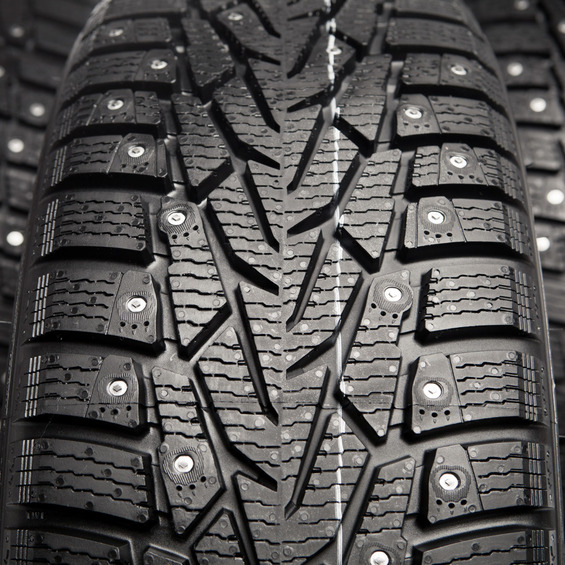
Tyres of different types of tyres.
All tyres are divided into winter, summer and universal tires. Apart from the difference in the composition of the rubber compound (softer natural rubber for winter and heat resistant artificial-for summer rubber), they differ in the tread pattern, the presence of a mistake and the design. The tread of the summer rubber has distinct longitudinal grooves for the extraction of water-and barely visible transverse perforations. This provides the best contact with the wet and dry road surface during the warm time of the year. The universal tyres have slightly more ramified tread pattern, which allows them to be used in a demisonate environment: the car will be able to cope with little dirt and snow. But much better these problems are solved by the winter tires: the surface of their tread is perched by deep grooves with a branched figure and the small furs of a complicated relief-it increases the working side surface. It is true that the winter rubber has a smaller, compared to summer and universal wear resistance, because there are many small stones and other solid objects in the tread of the tread, while movement creates friction, the material is damaged. The winter rubber is irreplaceable in the snowy road: the small spires extend the moisture from the snow melt and improve the tyre contact with the road surface. But it is not worth using the winter tires of the summer-on a dry, smooth road, the thorn is damaged and the rubber loses its properties. There are also off-road tyres, equipped with different shapes and sizes, and chains. High-speed tyres maintain very high temperatures and maintain stable contact with the pavement, regardless of speed. The identification of the tyres by the extra longitudinal grooves of the tread can prevent the effect of aquaplanning-loss of adhesion in rainy weather due to the formation of a water film at the point of contact of the wheel with the road. However, in a dry warm day, the machine may not behave very sustainably, because due to a lot of grooves, contact with the road is weak.

The types of tyres and the direction of the tread pattern are different. The Symmetric design is universal-you can put this bus on the left and on the right wheel. Besides, it's cheaper. It is not possible to install a tire with a directed tread pattern on both wheels. These tyres have one direction of rotation (indicated on the sidewall) as well as the external and internal side (indicated by Inside and Outside). Among the advantages of tyres with a directional pattern is the ability to cleanse itself of dirt and snow. The projector with an asymmetrical tread pattern likes to use expensive car owners, as it improves the characteristics of conventional winter tyres. Half of the tread (typically internal) creates good grip to the road at high speeds, while the other half provides stability on a bad road.
The profile of the tyre is wide-profile and narrow-profile. The advantages of a wide range of tyres include good contact with the pavement, excellent performance characteristics and braking of the car, as well as the best performance of turns at high speeds. The main drawback of these tyres is the increase in the weight of the car, which increases the fuel consumption (especially the littlework). In addition, tyres with wide rubber bands can contribute to the effects of aquascheduling. You won't say it's about a narrow, profile rubber, which, too, is cheaper. Independent professionals recommend, abstraction from possible pros and cons, to place large and powerful rubber bands on a broad profile, and small, smaller tyres.

The type of sealing and construction of the tyre is divided into chamber and incalculable. Chamber tyres have one or more valve cells inside the lid. In non-chamber tyres, the chamber shall be replaced by an airtight layer of air-tight rubber. Such tyres are less sensitive to puncturations, uneasy maintenance, very easy to mount and dismount. However, several decades ago, they were abandoned in favor of chamber. The latter, although they weigh more, do not require the mandatory installation of a wheel drive. The length of service of the chamber tyres longer, because a punctured tyre can be repaired and re-inflated.
You cannot separate RunFlat tires, which are created by special technology. Reinforced sidewalls and a special supporting component of rubber allow a car to ride with a puncture wheel a significant distance. The RunFlat tyres are expensive enough, so they install them mainly on the foreign arc of the high price segment.
When talking about the features of the carcass structure, the tyres can be diagonal (diagonal) or radial (the radial position of the threads). Radial tires are more resilient and wear-resistant, they better keep the road, react more quickly to braking and are not so sensitive when moving through roadblocks-for example, tramway routes. But the radial method of rolling the cord does not properly reinforce the sidewall of the tyre's carcass, so it may be deformed on impact. In addition, tyres of this type must always maintain a certain pressure, or their service life will be significantly reduced. For the most part, the diagonal tyres are designed for racing cars, which are designed for off-road and rough terrain. Such tyres perfectly reflect different impacts, and because of the simple design, they are worth an order of magnitude less radial.







